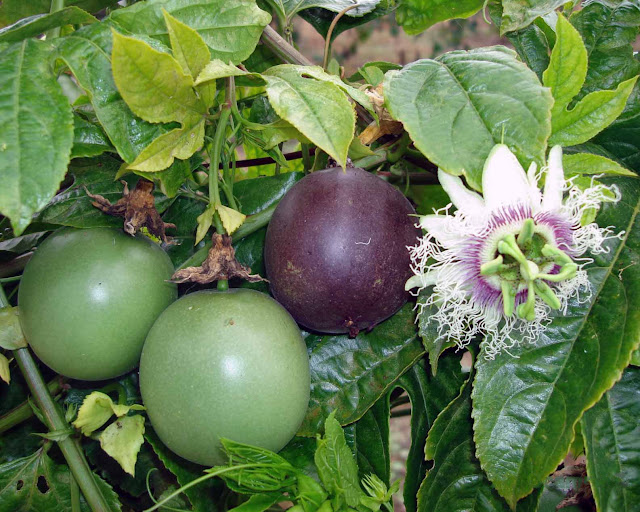AT TIMES passion is a fruit of love. Although the same is true the other way around.
What I love about passion fruit (Passiflora edulis) though is the sweet citrus taste that is milder compared to regular orange or calamansi. Eating it, however, is another story.
I tried extracting the juice directly in my mouth the way I usually eat poncan oranges, pulp and all except for the seeds.
Yet passion fruit can be unwieldy that way. I ended up feeling less satisfied in relation to the effort I put in getting the juice into my mouth. Thus I decided to proceed the usual way: place sufficient amount of scraped juice-filled seed-sacs into a glass of water, add a small amount of water and sugar, and then stir to extract the juice. Just remove the spent juice sacs with the seeds before drinking the juice.
Uniquely, you only drink passion fruit as a juice, nothing more.
While the fruit (without the pulp and peel), weighing 18 grams, contains 63 mg of potassium and primarily vitamins A and C with traces of Iron and magnesium, the peel is rich in dietary fiber that is soluble, making it a beneficial food to remove sticky cholesterol off the bloodstream. Peel flour usually contains 17.4 grams total fiber per 30 grams, with 6.3 grams soluble fiber and the rest insoluble fibers. The fruit itself contains 1.9 grams of dietary fiber.
Pectin is the major component of the passion fruit peel flour (PFPF) soluble fibers.
The De Queiroz study in 2012 noted that fasting blood sugar (FBS) drops by... [READ MORE]
This article appears in SunStar Cebu newspaper on 19 March 2014.

Comments
Post a Comment